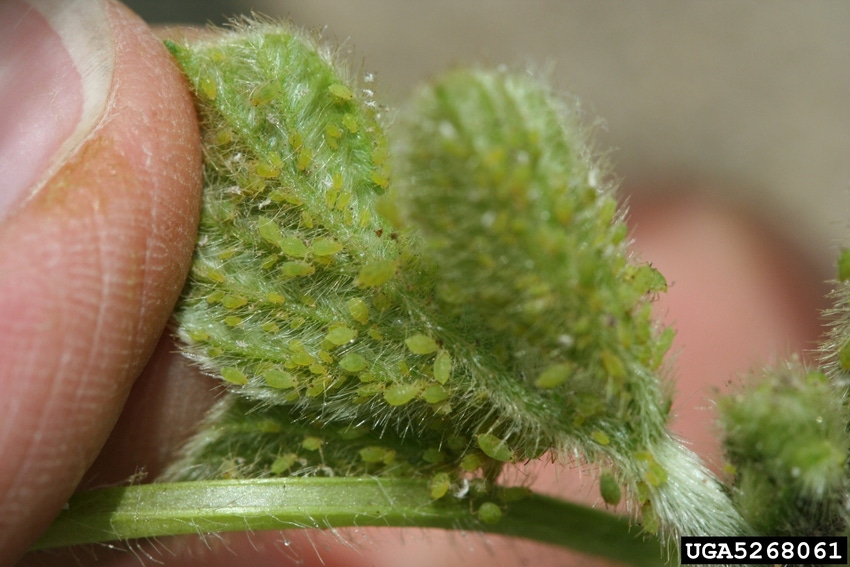May 12, 2022

Iowa’s most significant soybean insect pest, the soybean aphid, has host-alternating biology. Its primary host is buckthorn, an invasive shrub often found in hedgerows and roadside ditches, and its secondary host is soybean. For most of the year, soybean aphids exist as cold-hardy eggs on buckthorn branches near leaf buds. For many aphids that overwinter as an egg, hatching often happens when the host resumes spring growth. This makes biological sense because the aphids feed on phloem from actively growing tissue. If egg hatch happens too soon, they can suffer mortality from starvation.
We can track soybean aphid development using growing degree days (GDD), and research has confirmed that eggs hatch around the time buckthorn buds swell. Soybean aphid egg hatch occurs between 147-154 degree days (base 50°F) and buckthorn bud swell happens shortly after that (165-171 degree days). Based on air temperatures in 2022 (Figure 1), egg hatch is nearly complete in northern Iowa, where most of the buckthorn in Iowa is located.

After soybean aphid eggs hatch, they go through a few asexual generations on buckthorn before leaving in search of soybean. Soybean aphid may colonize plants as early as the beginning of June, but these infestations are typically short-lived due to natural enemy activity and environmental factors. However, infestations are sporadic and change quickly, so scouting throughout the growing season is the best way to understand how populations are changing and whether management is required. Begin scouting soybeans for soybean aphid in June and continue to scout every seven to 10 days. Learn more about soybean aphid identification, biology, scouting, and management in this encyclopedia article.
Source: Iowa State University, which is solely responsible for the information provided and is wholly owned by the source. Informa Business Media and all its subsidiaries are not responsible for any of the content contained in this information asset.
Read more about:
Crop ConditionsYou May Also Like




